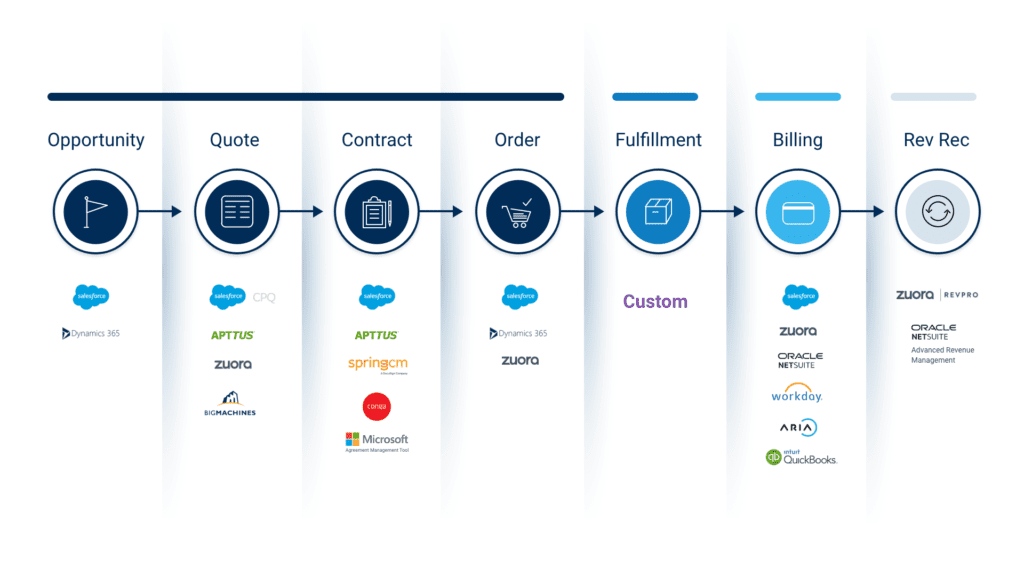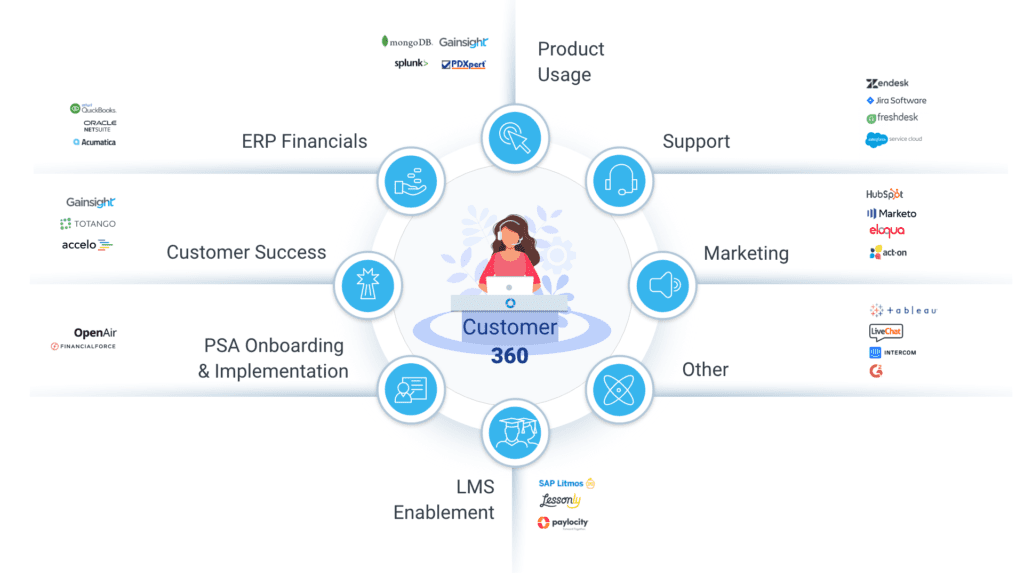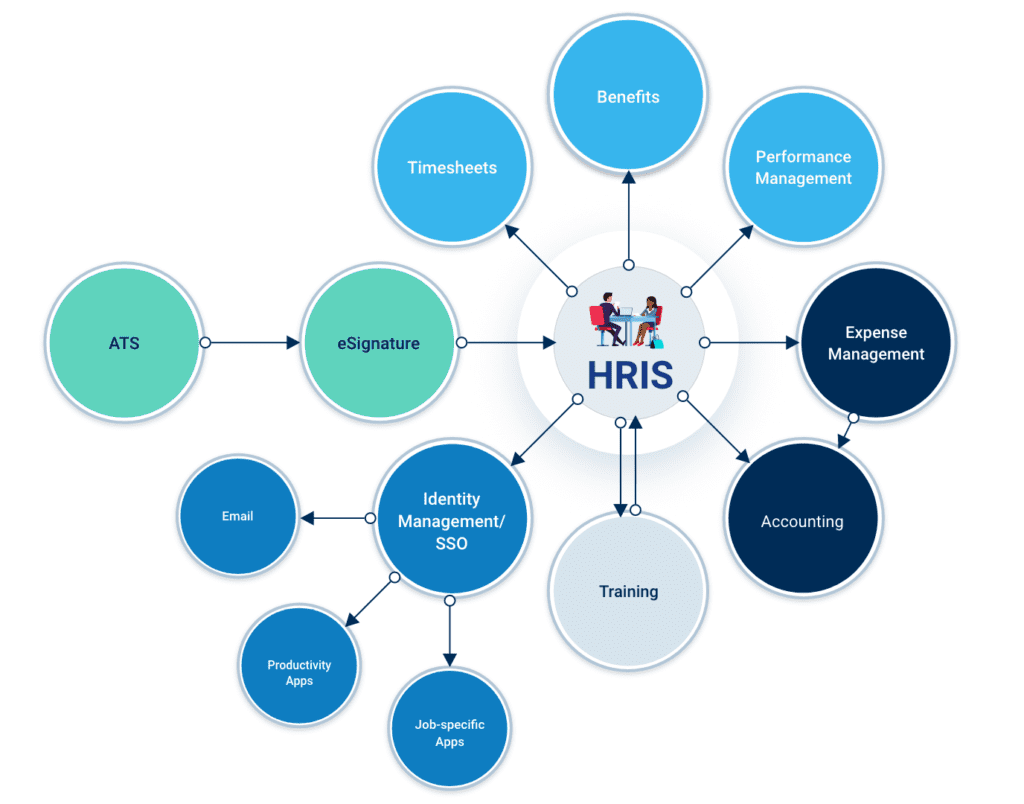Today’s SaaS apps are easy to acquire and use without IT and operations’ assistance. Due to that convenience, departments and teams tend to seek out best-of-breed cloud applications, streamlining foundational and specialized functions through automation.
However, trouble arises when your company ends up with a SaaS sprawl – the overall amount of adopted applications overwhelms your tech stack. Data becomes siloed in disparate SaaS apps, fragmenting the business processes that run your organization. That’s why integration needs to be a key part of your automation strategy.
All high-growth SaaS companies tend to share one thing in common: They automate critical business processes and mend fragmented ones early on to succeed. From our experience providing integrations to thousands of customers, here are the three key business process automations to help your growing company scale faster:
1. Quote-to-Cash
Managing the Quote-to-Cash process can be complex, since it covers the entire sales cycle, software licensing fulfillment, and revenue recognition, and it’s typically spread across many applications. That’s why this is the single most critical process that should be integrated and automated in any growing company
Through every sales cycle, there’s a need to share information from sales, accounting, customer success, and other teams. Without automation, companies find themselves dependent on manual data entry, quote creation, uploading and downloading data, and other resource-intensive, error-prone tasks.
Fast, accurate processing is crucial to close deals sooner, drive positive customer experiences, improve cash management and visibility, and increase operational efficiency.
2. Customer 360
As your company matures, your customer success, sales, and product teams need accurate data to gain a more holistic view of your customers. The Customer 360 concept helps you create more complete customer profiles by aggregating and analyzing data from across your organization. With this unified knowledge, you can personalize interactions, proactively reduce churn, and enable upselling opportunities.

The problem is that customer data exists across multiple applications and databases, including your CRM, ERP, reporting and analytics, and customer support. Without automation, your teams would have to spend time manually collecting data – duplicates and discrepancies would be unavoidable.
Integration brings together data trapped in various systems to help you understand how customers use your products, improve engagement, and increase net retention.
3. Employee Hiring and Onboarding
Finally, part of growing fast is being able to hire and onboard fast. That’s why your HR team is crucial to your success. However, one potential obstacle is repetitive data entry and other low-value duties. A typical HR system features numerous specialized applications that are detached from each other, which can make coordinating and streamlining workflows between them quite challenging.

Integration connects these applications to ensure that employee information is automatically synced when and where you need it. Automating administrative tasks enables your team to focus more on the employee experience and company culture.
By reducing bureaucracy, HR can lead strategic initiatives including change management and organizational effectiveness.
Types of Integration Solutions
When it comes to integrating your business processes’ apps, you have some decisions to make for potential solutions:
API-based custom coding can be a powerful starting point when you have a few applications and consistent access to trained technical resources. As your company grows, though, creating more scalable, robust integrations can be challenging.
Point-to-point (P2P) integrations are typically built for a specific use case. While they might work great in the short term, you’ll eventually run into difficulties if you want to make additional customizations. They also won’t scale with your company’s growing amount of SaaS apps.
Native integrations quickly address your most basic requirements, especially when your company is in an early stage. However, these out-of-the-box or vendor-built solutions are also static and not designed with enough flexibility or customization capabilities to sustain growth.
Integration platform as a service (iPaaS) standardizes how integrations are built and managed across your organization. A next-gen iPaaS in particular supports a federated model: IT has centralized control while business users are empowered to address their needs. While offering developer tools for customization, the ideal solution should also have a marketplace of pre-built integrations and connectors for quickly and effectively integrating common use cases.
Integration Roadmap
There comes a point in your company’s lifecycle when you need to incorporate automation and integration into your business processes. Taking this proactive step can foster further growth while helping you stay competitive. Otherwise, you risk holding your company back.
In preparation, we highly recommend building an integration roadmap:
- Map out all of your business processes, listing the related applications and tools.
- Identify processes that would be excellent integration candidates because they’re the slowest and most resource intensive.
- Pinpoint critical data that must be 100% accurate and timely.
- Calculate your integration ROI, including saving time and resources, preventing delays and errors, and improving decision making.
By integrating your SaaS apps, you can create a more connected enterprise that’s better equipped for driving growth and change.
For a more detailed look at this process in action, take a look at this presentation titled Automation as a Competitive Advantage.
Blog post brought to you by Celigo.


